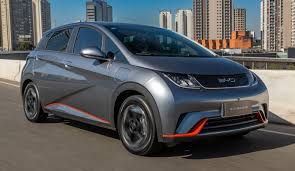In 2024, the landscape of electric vehicle (EV) road trips is undergoing a transformative shift, powered by the rapid expansion of fast-charging networks. According to a recent report by Bloomberg Green, over 70% of new EV owners are now considering long-distance travel thanks to advancements in charging infrastructure. This surge in confidence is fueled by the availability and reliability of fast-charging stations across major highways and scenic routes, making the dream of zero-emission road trips a reality. In this article, you’ll discover how fast-charging networks are reshaping the EV travel experience, the technology behind these innovations, and practical tips for your next electrifying adventure.
The Rise of Fast-Charging Networks
Expanding Infrastructure: A Game Changer for EVs
The expansion of fast-charging networks is pivotal to the EV revolution. Major players like Tesla, Rivian, and Volkswagen have invested heavily in broadening their charging infrastructures. Tesla’s Supercharger network, for example, now boasts over 50,000 stations globally, with plans to double this number by 2025. Similarly, Rivian’s Adventure Network targets off-the-beaten-path locations, providing more options for the adventurous traveler. According to Reuters Mobility, the global number of fast-charging stations is expected to surpass 1 million by the end of 2024, up from 600,000 in 2022.
Fast-Charging Innovations: Cutting-Edge Technology
Fast-charging technology has seen remarkable advancements, drastically reducing the time spent waiting. Current systems can charge an EV battery from 10% to 80% in as little as 20 minutes. For instance, Hyundai’s latest Ioniq 6 leverages an 800-volt architecture, enabling ultra-fast charging speeds. This technology is not just limited to luxury brands; mainstream manufacturers like Ford and Nissan are integrating similar capabilities into their models, democratizing access to rapid charging.
Environmental Impact: A Sustainable Choice
Beyond convenience, fast-charging networks also contribute to sustainability. By supporting renewable energy sources and reducing reliance on fossil fuels, these networks align with global climate goals. According to the International Energy Agency (IEA), EVs charged via renewable energy can reduce CO2 emissions by up to 70% compared to traditional gasoline vehicles. Brands like BYD and Lucid Motors are leading the charge by ensuring their networks are powered by clean energy, setting a benchmark for the industry.
Planning Your EV Road Trip
Essential Tips for a Smooth Journey
Planning an EV road trip might seem daunting, but with the right preparation, it can be as seamless as traveling with a conventional vehicle. Here are some tips to ensure a stress-free journey:
- Map Your Route: Use apps like PlugShare or A Better Routeplanner to find charging stations along your route.
- Check Compatibility: Ensure your vehicle is compatible with the available charging networks. Most fast chargers are now universal, but it’s best to verify.
- Have a Backup Plan: Identify alternative charging stations in case your primary choice is unavailable.
- Optimize Charging Times: Plan to charge during meal breaks or overnight stays to maximize time efficiency.
Where to Charge: Top Networks to Consider
With several fast-charging networks available, here are some of the top options to consider:
- Tesla Superchargers: Best for Tesla owners, offering seamless integration with the Tesla navigation system.
- Electrify America: A robust network serving all EV makes, with over 3,500 locations in the U.S. alone.
- IONITY: A European-based network expanding rapidly across North America, ideal for long-distance travel.
- ChargePoint: Known for its extensive coverage and easy-to-use app interface, suitable for diverse vehicle brands.
Comparing Charging Costs
Charging costs can vary significantly depending on the network and location. Here’s a quick comparison to help you budget:
- Tesla Superchargers: Typically charge per kWh, with rates averaging $0.28 per kWh.
- Electrify America: Offers membership plans that reduce costs, with pay-as-you-go options also available.
- IONITY: Charges per session, with rates around €0.79 per kWh in Europe.
- ChargePoint: Prices vary by station owner, so it’s advisable to check rates on their app beforehand.
The Future of EV Road Trips
Trends to Watch in 2024 and Beyond
As fast-charging networks continue to evolve, several trends are set to enhance the EV road trip experience:
- Increased Range: Future EV models will boast longer ranges, reducing the need for frequent charging stops.
- Enhanced Connectivity: Car manufacturers are focusing on integrating charging station data directly into vehicle navigation systems for a seamless experience.
- Wireless Charging: Emerging technologies like wireless or inductive charging could soon eliminate the need for cables altogether.
Engaging With the EV Community
Being part of the EV community can enhance your travel experience. Join online forums, attend EV meetups, and share your road trip stories on social media. Not only does this provide a platform for advice and recommendations, but it also fosters a sense of camaraderie among fellow EV enthusiasts.
Conclusion
Fast-charging networks are truly revolutionizing EV road trips in 2024, making long-distance electric travel more accessible and sustainable than ever before. With an expanding infrastructure, cutting-edge technology, and a focus on environmental impact, the future of road trips is electric. So, are you ready to hit the road in your EV? Plan your next trip today, and embrace the thrill of zero-emission travel. As we move forward, the journey will only get more exciting, with innovations promising even greater convenience and efficiency. Happy travels!

